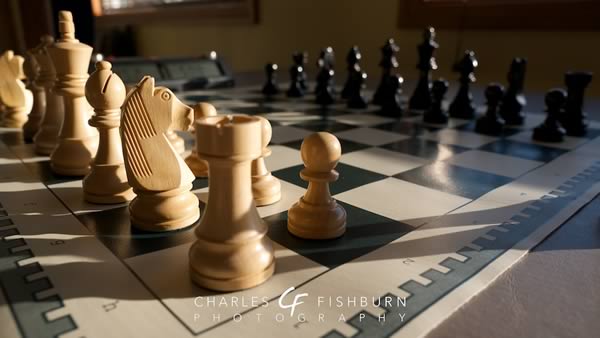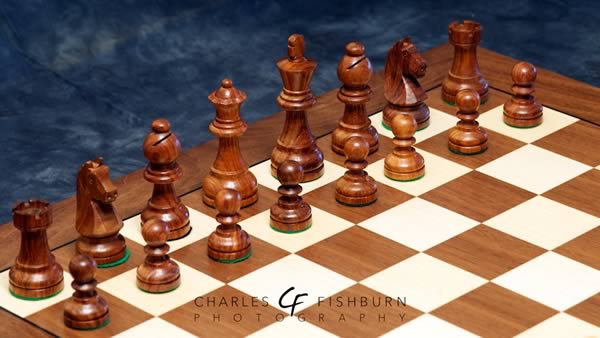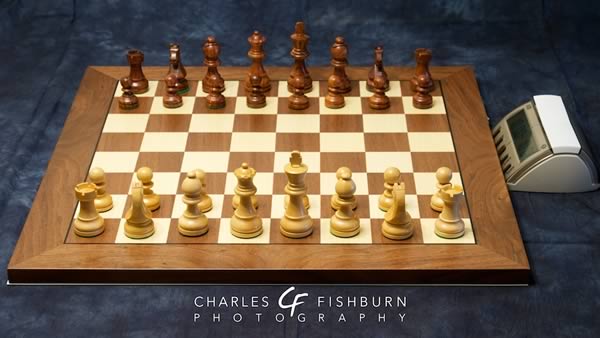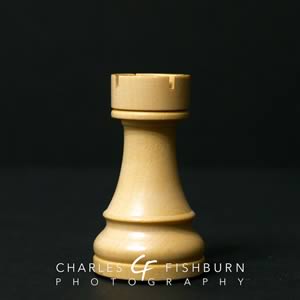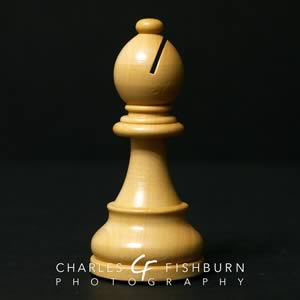
Updated 2016-05-05
German Knight Chess Set

While some designers or retailers may have a different name for this style of chess set, I mostly have seen this listed as a "German Knight" set. This entire set is rather plain; some may consider it too plain or too unremarkable to be desirable. But I really like this set. While I like the House of Staunton Zagreb '59 set and Kasparov Signature set (which, itself, follows the German knight design), I would not take them to the chess club for regular play. And even though I really like the design, weight and feel of the House of Staunton Collector set, that chess set is still plastic and simply doesn't offer the same feel as a wooden set. That said, I actually would like to see a good, heavily weighted plastic version of this set. My particular set is actually a Mark of Westminster set that I purchased online from chess retailer ChessUSA in 2008.
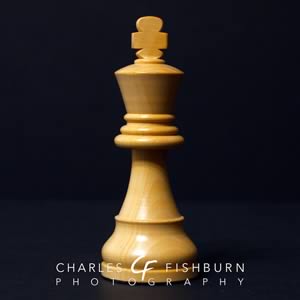
It's a great tournament set. If your opponent brings a plastic set to the table, the chances might be pretty good that he or she would rather play with yours. It is weighted but reasonably so: not too light but not very heavy. Even though this is a wooden chess set, it is not necessarily an expensive set. So the black pieces (not pictured) are not ebony or rosewood or anything exotic. But rather, they are simply "ebonized" boxwood, which is a fancy way to say "stained black". If someone took an opportunity to relieve me of this set (i.e. had the chance to steal it from me), I could replace it readily without too much of a premium or without having to hope to find it on eBay.
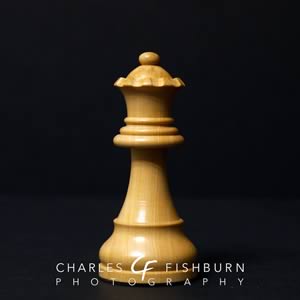
This particular set features a basic, standard height 3.75" king, with a cross finial at the top that I think is a bit misproportioned. That finial is probably my least favorite design feature of this set. The queen is simple as well, but with an interesting, softer alternative to a crown than many sharply pointed queens in other sets. The rook (shown below the description of the knight) is basic but, I think, well- and rightly-proportioned. The top isn't too short and the parapet cuts aren't too deep. The bishop (also below the description of the knight) has a more spherical top and seems rather bulbous when compared to more oval or teardrop-shaped bishops. Its miter cut is a simple slit and quite reserved when compared to the more extreme contoured miter cut on the House of Staunton Collector set (among others).
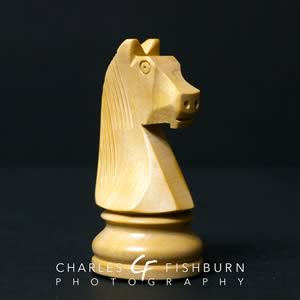
Contrast this knight with its Kasparov/Guigou-designed cousin. This version is comparatively thinner and less substantial, but is actually the typical design for this style. For instance, DGT Projects use this more modest design in their "DGT Timeless" chess pieces for their e-boards. The muzzle is rather spartan with coarse or rudimentarily-carved facets to taper the nose, and a simple shallow groove to indicate the mouth. The front of the chest is a rectangle on a flat (as opposed to concave) slope. Compare that rectangle to the triangular, tapering chest of the Kasparov knight, which I prefer here.
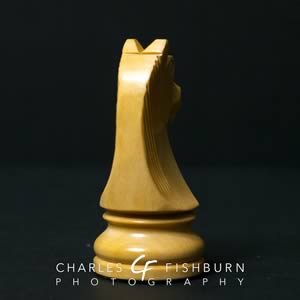
The mane is indicated very basically with shallow, slanted grooves along the back sides of the piece rather than being a more detailed, carved mane that adds shape to the back spine of the piece. And in fact, the back of the mane itself is simply a smooth curve. Again, compare this to the Kasparov Signature knight which lacks any indication of a mane along its sides but features a kind of wave pattern along the back of the spine.
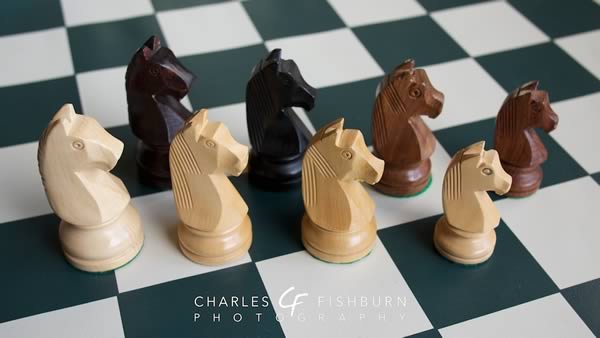
Kasparov Signature, Mark of Westminster, DGT Timeless, and a smaller generic, unnamed set.
